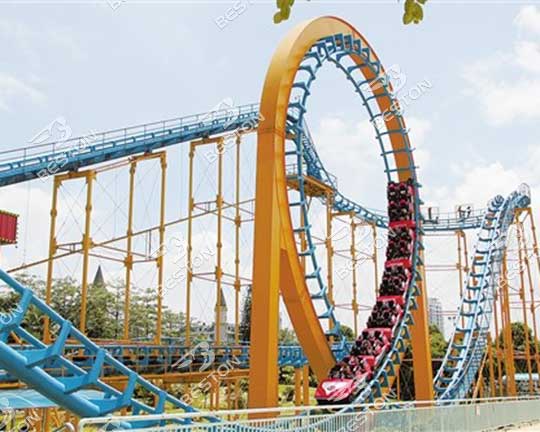


The amusement ride industry is growing, driven by technology, rising demand, and global investment, especially in roller coaster innovations.
The global amusement ride industry, a sector defined by innovation and adrenaline, is poised for transformative growth. Anchored by advancements in engineering and changing consumer preferences, the market trajectory suggests sustained expansion through the next decade. Increasing urbanization, rising disposable incomes, and a global appetite for high-thrill recreational experiences have solidified the role of amusement rides as a mainstay in the leisure economy.
Amusement ride demand is intricately linked to macroeconomic indicators and demographic trends. Emerging markets, particularly in Asia-Pacific and Latin America, are exhibiting heightened interest in leisure infrastructure. Nations such as China and India are investing aggressively in domestic theme parks, catalyzing demand for roller coaster and other high-capacity ride systems.
In mature markets, the focus is shifting toward ride modernization and technological integration. Western Europe and North America are witnessing retrofitting of legacy systems, introducing hybrid attractions that blend physical thrills with digital immersion. Augmented reality (AR), artificial intelligence (AI), and Internet of Things (IoT) are gradually being assimilated into ride operations, creating a paradigm where operational efficiency meets experiential depth.
The amusement ride sector is segmented by ride type, end-user, and geographic location. Fixed rides, especially those in established theme parks, continue to dominate revenue share. Roller coaster, flume ride, and pendulum ride categories command substantial capital investment due to their ability to draw large crowds and deliver repeatability in guest engagement.
Portable rides, predominantly featured in traveling fairs and regional festivals, remain critical in developing economies and rural sectors. Though typically generating lower per-unit revenue, their flexibility and lower installation thresholds make them a staple in decentralized entertainment markets.
Safety and engineering sophistication are no longer optional—they are market imperatives. Modern roller coaster installations are engineered with precision-controlled braking systems, magnetic propulsion units, and ergonomic restraints designed to accommodate a wider range of body types and accessibility needs.
Advanced data telemetry is now routinely embedded into ride systems, enabling predictive maintenance and real-time diagnostics. These systems minimize downtime and enhance lifecycle management, thereby increasing return on investment for operators. Furthermore, ride simulation technologies allow developers to pre-test ride physics under varied stress conditions, reducing post-installation recalibrations and compliance hurdles.
Private equity and institutional investors are increasingly scrutinizing amusement ride manufacturers and park operators as viable asset classes. The post-pandemic resurgence in travel and entertainment has revived capital flows into the sector. Operators with strong brand equity and intellectual property—such as proprietary ride designs or themed experiences—are particularly attractive due to their pricing leverage and customer loyalty.
Capital expenditure cycles are trending upward, with mega parks allocating substantial budgets for next-generation roller coaster systems, multi-sensory dark rides, and immersive queue experiences. As competition intensifies, differentiation through design and user experience will be crucial to maintain market share.
Despite its optimistic outlook, the industry faces regulatory headwinds and public scrutiny over safety standards. Varying compliance frameworks across jurisdictions complicate international deployment strategies. Environmental considerations, particularly noise pollution and land use, are also constraining development in densely populated regions.
Labor shortages, especially in technical roles such as ride maintenance and operations, are pushing firms to invest in training programs and automation. Insurance premiums for high-thrill attractions continue to rise, requiring operators to adopt stringent risk mitigation protocols.
The amusement ride industry is navigating a pivotal juncture. Market expansion is undergirded by evolving consumer behaviors, technological integration, and regional diversification. With roller coaster systems continuing to serve as anchor attractions, the sector’s long-term prospects remain favorable—contingent on sustained innovation, operational resilience, and regulatory alignment. Stakeholders who adapt to these dynamics will be best positioned to capitalize on the next wave of growth in the global amusement economy.
